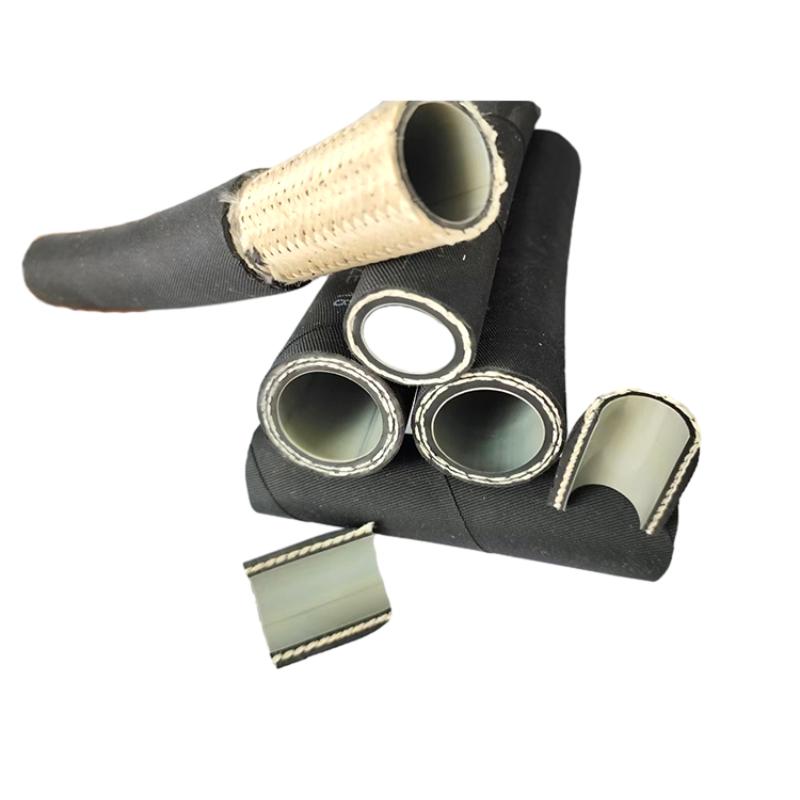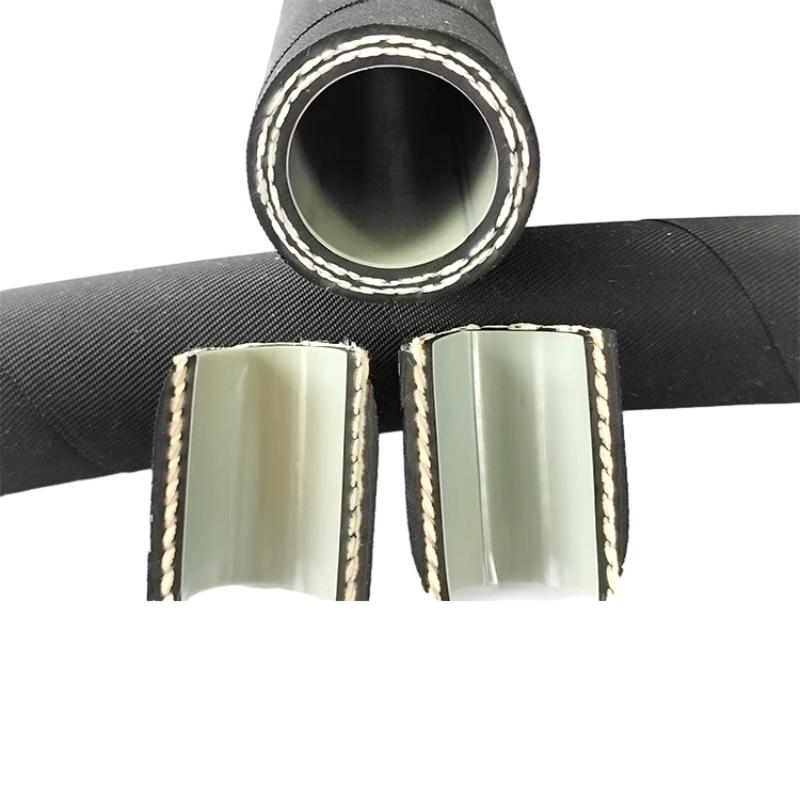In the realm of industrial and automotive air conditioning systems, the significance of a high-quality refrigeration hose cannot be overstated. Serving as the lifeline for the secure transfer of refrigerants, these hoses are engineered for durability, flexibility, and robust compatibility with both traditional and new-generation refrigerants. HEBEI KEMO AUTO PARTS TECHNOLOGY CO., LTD (kemohose.com), as an industry leader, stands at the forefront of modern refrigeration hose technology, offering innovative solutions tailored to the evolving needs of automotive, industrial, and commercial HVACR applications.
1. Industry Trend Insights: Refrigeration Hose in 2024
The relentless shift towards eco-friendly refrigerants, such as R1234yf and R134a alternatives, has propelled a major transformation in refrigerant transport technology. The demand for refrigeration hose capable of resisting permeation, enduring high pressure and extreme temperatures, and compatible with low GWP refrigerants is surging globally.
According to recent HVACR forums, regulatory frameworks like SAE J2064B and ISO 14001 are setting new benchmarks for hose materials and emissions standards, emphasizing barrier performance and lifecycle safety (SAE Standard Reference).
Main Parameters of Refrigeration Hose (2024)
| Parameter |
Standard Value |
Description |
Relevance |
| Working Temperature (°C) |
-40 to +140 |
Operating temperature range |
Ensures use in automotive & industrial environments |
| Max Working Pressure (bar) |
25-35 |
Pressure resistance |
Safety for high-performance systems |
| Barrier Material |
PA/NYLON |
Inner permeation barrier |
Prevents refrigerant leakage |
| Cover Material |
EPDM/CLOTH |
External layer protection |
Resists ozone, UV, oil |
| Friction Layer |
EPDM/CSM/IIR |
Shock absorption, flexibility |
Durable in dynamic installs |
| Certifications |
3C, DOT |
Quality standards |
International compliance |
| Standard Compliance |
SAE J2064 |
Design & performance |
Required by OEMs |
| Compatible Refrigerants |
R1234yf, R134a, R404a etc. |
Chemical compatibility |
Ensures wide application |
2. Technical Evolution & Specification Analysis
Modern refrigerant pipes require advanced layered construction to sustain service in alternating temperature cycles and high-vibration zones. The innovation focus is on:
- Inner Permeation Resistance: PA/Nylon barriers ensure minimal loss of refrigerant (including R1234yf and R134a), meeting strict standards like SAE J2064 Type E for low loss refrigerant hoses.
- Reinforcement: PET/PVA fibers improve pressure resistance and durability under dynamic flex.
- Cover Layer: Thick EPDM or CSM jackets add UV and chemical resistance for outdoor and engine bay routing.
- Wide Compatibility: Integrated formulations provide safe operation with legacy and new-generation refrigerants.
Technical Parameters Trend of Refrigeration Hose (2016-2024)
This trend chart visualizes the improvement in working pressure, expansion in thermal range, and dramatic decrease in permeation rates for refrigeration hose over the last decade.
Refrigeration Hose Technical Indicator Comparison
KEMO's refrigeration hose outpaces the industry average in pressure, permeation barrier, certification levels, and flexibility—a testament to ongoing innovation.
Market Share by Application: Refrigeration Hose (2024)
The largest application of modern refrigeration hose is in automotive air conditioning (A/C) systems, followed by growth in commercial refrigeration and cold-chain logistics.
3. Application Scenarios & Advantages of Refrigeration Hose
- Automotive A/C and Truck Refrigeration: Flexible refrigeration hose is essential in cars, buses, and trucks, managing space constraints and vibration while preventing refrigerant loss. R1234yf hose adoption is rapidly replacing R134a because of environmental mandates (MACS, Mobile Air Climate Systems Association).
- Cold Chain Logistics: Trucks, container111s, and cold-storage systems utilize low loss refrigerant hoses to maintain refrigerated cargo conditions, with highly durable cover layers to handle outdoor exposures and repeated movement.
- Commercial & Industrial HVACR: In supermarkets, buildings, and factory environments, hose refrigerant solutions simplify system installations compared to rigid pipes, facilitating retrofits and optimized routing.
- Chillers & Heat Pumps: High-pressure rated hose allows for safe, efficient refrigerant transfer in advanced cooling and heating systems.
4. Professional FAQ: Refrigeration Hose Technical Know-How
Refrigeration Hose: Technical FAQ
Q1: What are the main materials used in premium refrigeration hose construction?
A1: Quality hoses feature multi-layered structures: PA/nylon for barrier, EPDM/CSM/IIR as friction layer for flexibility, PET/PVA reinforcement for strength, and EPDM/CLOTH as an external protective cover.
Q2: What is meant by "low loss refrigerant hoses"?
A2: This refers to hoses designed with advanced barrier layers (usually PA/Nylon) to minimize refrigerant permeation to less than 2 g/m/year, crucial for compliance with modern environmental regulations (
SAE J2064 Type E).
Q3: How does working pressure rating affect refrigeration hose selection?
A3: The hose must exceed the maximum operating system pressure with a safe margin. Modern hoses range from 25-35 bar, ideal for R134a, R404a, and R1234yf systems.
Q4: What are the standard certifications for a refrigerant pipe?
A4: Leading products carry 3C and DOT certifications and comply with SAE J2064, ensuring international acceptance and reliable quality.
Q5: What installation best practices must be followed for maximum lifespan?
A5: Ensure correct hose bending radius, avoid physical pinch points, use only compatible fittings, and inspect for UV or chemical exposure. Always refer to manufacturer and SAE standards during installation (
Installation Tips).
Q6: How does KEMO’s hose handle compatibility with next-generation refrigerants like R1234yf?
A6: KEMO refrigeration hose employs enhanced PA layers and chemical-resistant elastomers, fully compatible with R1234yf as required by new vehicle platforms.
Q7: What is the difference between "hose refrigerant" and rigid pipe refrigerant systems?
A7: Hose assemblies allow flexible routing, reduce vibration/stress, and are faster to install—especially in confined or dynamic environments—whereas rigid pipes offer less flexibility but may provide higher static pressure strength.
- Deep manufacturing expertise—over 15 years dedicated to automotive and industrial hose refrigerant R&D.
- Global OEM supply chain recognition; full traceability & tight quality control (ISO/TS 16949 certified factories).
- Customized solutions: Barrier layer, cover thickness, reinforcement tailored for market needs (e.g., r1234yf hose for latest A/C, low-permeation options for European markets).
- Rapid logistics, after-sales technical support, and global customer references.
- Documentation and data transparency—full support for compliance and tender requirements.
6. Conclusion: Trends and Authoritative Resources
The future of refrigeration hose lies in synergizing barrier technology, environmental compliance, and high-performance manufacturing. As refrigerant systems grow in complexity—in both automotive and industrial domains—choosing a reliable partner such as HEBEI KEMO AUTO PARTS TECHNOLOGY CO., LTD guarantees quality, performance, and total system safety.
By keeping pace with SAE, DOT, and international HVACR standards, and acting on the latest research disseminated in professional forums and journals, enterprises secure their competitive edge and environmental responsibility. For more product details or technical consultation, visit refrigeration hose or contact us directly.





